23 Things You Might Not Know About Giant Pandas
The giant panda (Ailuropoda melanoleuca) goes by several names, including panda and giant panda. It's a bear renowned for its love of bamboo and inhabits portions of the mountainous regions in southwestern China.
Basic Information about Giant Pandas:
| Characteristic | Description |
|---|---|
| Habitat | Mountains, Forests |
| Location | Southwest, Northwest regions |
| Lifespan | 14-30 years |
| Size | 1.2-1.9 meters |
| Weight | 70-135 kilograms |
| Color | Mainly black and white, partially brown-white |
| Food | Bamboo (99% of diet). Occasionally grass, small mammals, and birds |
| Natural Predators | Very few natural predators; snow leopards or foxes can kill panda cubs |
| Top Speed | 32 kilometers per hour |
| Species Count | 1 |
| Conservation Status | Vulnerable |
The giant pandas prefer living in damp, misty forests.
They have specific requirements, including at least two types of bamboo and a water source within the ancient coniferous forests. These forests provide large tree stumps and hollow logs of suitable sizes for panda dens. Another advantage of this habitat is the shelter and nutrients offered by the bamboo that grows there.
Once widespread across China and even parts of Myanmar and northern Vietnam, giant pandas have been listed as endangered from 1990 to 2016, later downgraded to vulnerable primarily due to habitat loss, poaching, and poor reproduction.
Today, giant pandas are only found in 20 isolated bamboo forests across six mountain ranges in the Sichuan, Shaanxi, and Gansu provinces of China, mostly within the Minshan and Qinling Mountains.
1. Giant pandas consume 99% of their diet as bamboo, ingesting around 20 kilograms of bamboo daily.
They spend at least 12 hours each day feeding on it. Bamboo is nutritionally poor, requiring pandas to eat a large volume to obtain enough energy from it.
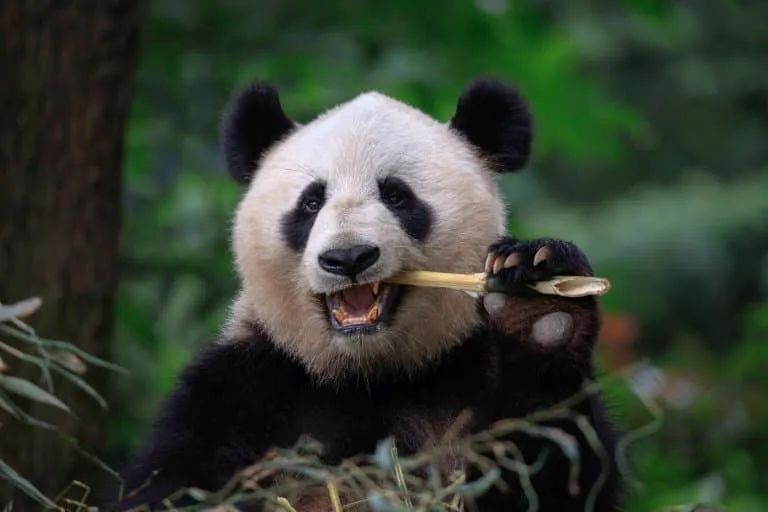
2. Despite their extensive bamboo intake, giant pandas aren't large in weight.
Male pandas are the heavier of the two sexes, ranging from 75 to 135 kilograms. On the other hand, females weigh between 70 to 100 kilograms.
3. Giant pandas have evolved a unique pseudo "thumb" that they use to grasp bamboo.
This "thumb" is actually an enlarged and modified wrist bone, also found in raccoons, red pandas, and black bears (in a more "primitive form"). It assists pandas in handling bamboo, enabling them to peel and eat bamboo shoots in about 40 seconds.
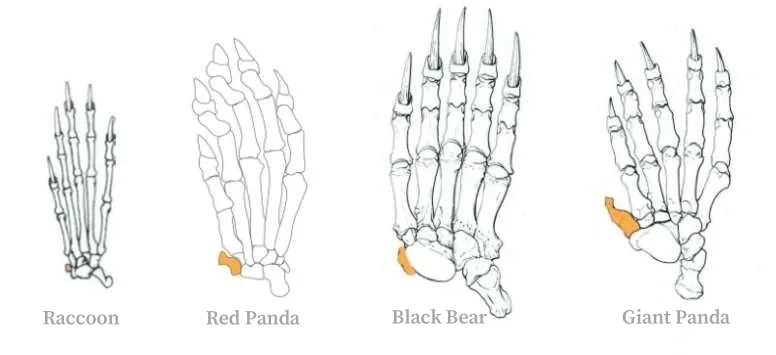
4. Giant pandas possess carnivore-like teeth but are herbivores.
They are believed to have evolved from omnivorous diets to nearly exclusively consuming bamboo about 20,000 years ago.
5. The internal organs of giant pandas aren't well-suited for bamboo.
Despite their evolutionary adaptation to bamboo consumption, researchers have found that their digestive system isn't adequately adapted. Their digestive system remains more suitable for a carnivorous diet. Scientists believe this increases their risk of extinction.
6. Male giant pandas have a larger range than females.
Panda habitats cover approximately five square kilometers. Males occupy the upper limit of the range, while females have slightly smaller territories.
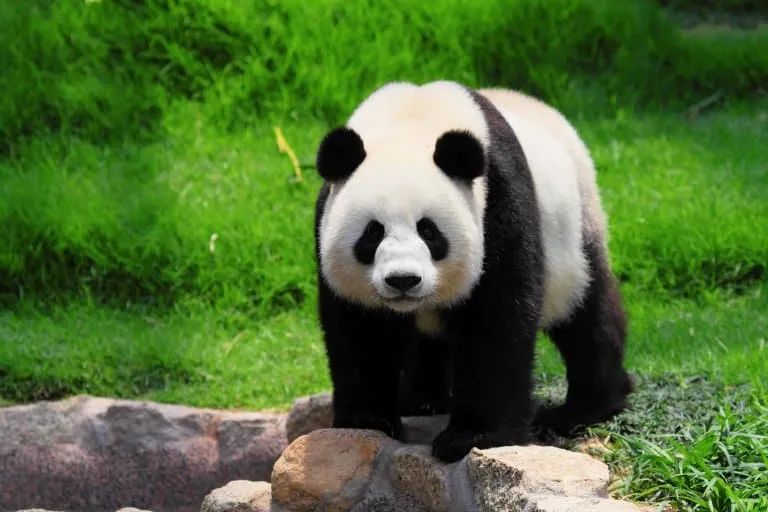
7. All giant pandas in the world are citizens of China.
As the giant panda is a national treasure of China and legally protected, if you see a giant panda in a reserve or zoo outside China, it's essentially on loan from China. Each cub born must be returned to China to assist in expanding the genetic pool.
8. The giant panda population isn't high, but it's increasing.
In the 1970s, there were only around 1,000 giant pandas on Earth. A census in 2014 showed an increase to approximately 1,800 pandas living in the wild.
9. The Chinese government is improving natural reserves to aid in their survival.
China has 67 giant panda reserves, catering to 66% of wild pandas and nearly 54% of existing habitats.
10. Giant pandas can climb trees and swim.
They start climbing at around six months old and, like all bears, can swim proficiently when necessary.
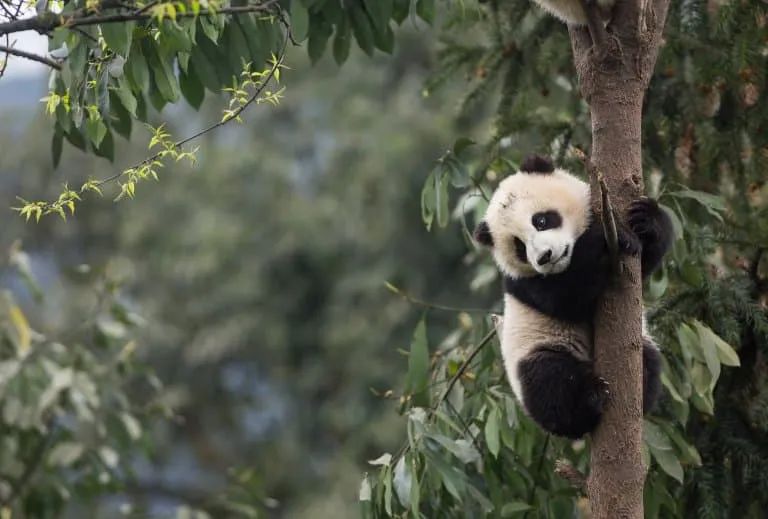
11. Giant pandas have nearly double the lifespan in captivity compared to the wild.
Their average lifespan ranges from 14 to 20 years. For those in captivity, this figure extends to 30 years.
12. Giant pandas are quite "lazy."
They spend most of their time eating or sleeping. Breeding doesn't seem to be high on their priority list.
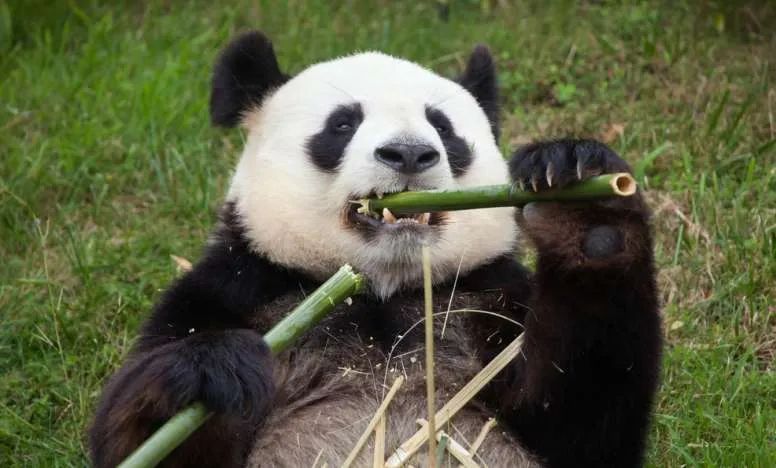
13. The reproductive cycle of giant pandas is somewhat slow.
Mature females in the wild breed once every two to three years, with approximately five litters in a lifetime.
14. Giant pandas have been around for quite a while.
Fossil records of pandas date back 20,000 to 30,000 years.
15. The scientific name for pandas nearly describes the creature itself.
Ailuropoda melanoleuca translates to "black and white bear," painting a picture of the panda's appearance as if you've never seen one before.
16. Giant pandas don't hibernate in winter.
They are among the few bears that do not hibernate in winter. Instead, they move from higher-altitude homes to warmer, lower-altitude areas to continue enjoying bamboo.
17. Pandas remained a puzzle to scientists for a considerable period.
Research on giant pandas posed challenges for scientists who were unsure whether they were true bears or an entirely different species. Clues unlocked in panda cell DNA provided genetic evidence indicating their relation to bears.
18. Giant panda fur fetches high prices on the black market.
In illegal trade markets, panda fur can be sold for anywhere between $60,000 to $100,000.
19. Giant panda cubs are pink at birth.
When born, panda cubs have pink skin, measuring around 15 centimeters, covered in a very thin layer of white fur. They possess a long tail, no teeth, and their eyes are closed. After about a month, the cub will have mostly black patches, and its eyes will open in the following weeks. At 14 weeks old, the cub starts getting teeth. Subsequently, both the cub and its mother reduce the frequency of using their den.
20. Giant panda mothers and cubs have limited time together.
Cubs stay with their mothers until they're approximately one and a half years old. At that point, they will leave on their own and lead the solitary life typical of most giant pandas.
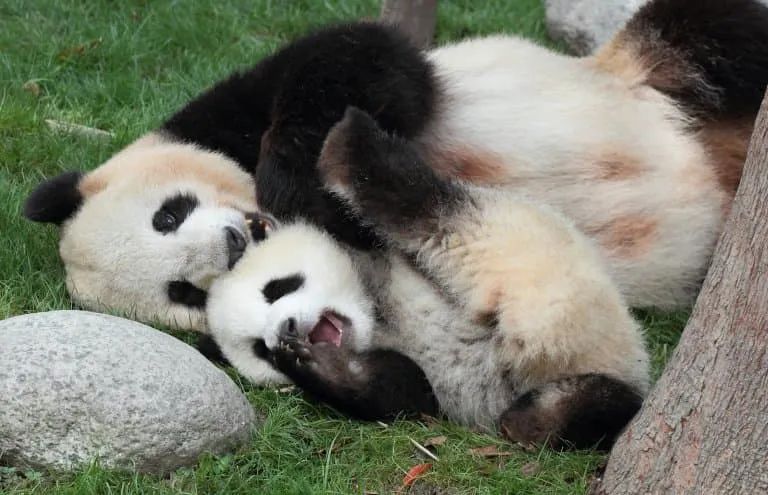
21. Pandas have a diverse range of vocalizations.
Researchers have been able to distinctly identify a total of 11 different panda vocalizations. They even suggest that four of these are reserved for pandas seeking mates.
22. Pandas symbolize peace and friendship in China.
Centuries ago, during times of conflict, tribes would raise a flag with a panda on it to halt battles and declare truces.
23. Pandas are an iconic symbol with remarkable recognition.
The World Wildlife Fund chose the panda as their emblem due to the bear's peaceful nature.










